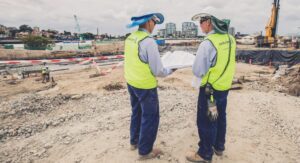 Construction procurement and purchasing is a series of considered risks – each method has its strengths and weaknesses. A proper supply chain may be essential for a construction site to run smoothly, but the key to its profitability is controlling purchasing conditions/project spending. Deciding what method to use for a given project is a challenge, as a client’s objectives and priorities need to correlate with the selected method to ensure that the project procurement will be handled successfully.
Construction procurement and purchasing is a series of considered risks – each method has its strengths and weaknesses. A proper supply chain may be essential for a construction site to run smoothly, but the key to its profitability is controlling purchasing conditions/project spending. Deciding what method to use for a given project is a challenge, as a client’s objectives and priorities need to correlate with the selected method to ensure that the project procurement will be handled successfully.
Methods of procurement include:
- Traditional Procurement – The employer accepts that design work will generally separate from construction, consultants are appointed for design and cost control, and the contractor is responsible for carrying out the works.
- Design and Construct Procurement – The contractor accepts responsibility for some or all of the design. There should be express reference to this in the contract, and the extent of design liability should always be set out as clearly as possible.
What sets construction procurement apart from any other type of procurement is that each construction project is independent and unique. Good procurement means that the projects is delivered on time, the project is on budget and of high quality. In short; the project was a success.
Influences that affect good procurement and complicate the process of controlling project spend are:
- Project Spending and Technologies
Over recent decades, industry generally has come to recognize the inefficiencies that exist in paper-based purchasing systems. Many sectors of industry have replaced their old systems with electronic purchasing and material tracking systems. The construction sector, however, continues to retain its reliance on a paper-based system. Changing their processes and procedures is low on their list of priorities, mainly because of their perception of the time involved.
A project cannot proceed without adequate financing, and the cost of providing adequate financing can be quite large. Attention to project finance is an important aspect of project management. Finance is also a concern to the general contractor and material suppliers in different phases of the procurement process.
Construction projects often find it difficult to keep track of all orders, more so for large projects. The current administrative process for purchasing building supplies can lead to significant add-on costs which could potentially be avoided by using an electronic purchasing system based on current technology. A dedicated purchasing system, such as Procurementexpress.com, offers a workflow that streamlines and offers the transparency needed for construction projects (while being easier to implement and maintain).
- Ground Conditions
Soil conditions can make or break construction projects. Engineers and soil scientists measure the soil to see how easily the specific piece of earth changes shape or shifts and whether it will bear the weight of structures. They also establish the soil texture and horizons of subsoil. Building on the wrong soil, or without footings on unstable clay or sand, leads to foundations that crack, landfills that leak, dams that break, and sports fields that flood.
- Topography
If a site is flat, the topography may not influence the location and layout of the building, but on a sloping site, the topography is likely to be a significant design factor.
- Logistics
Effective logistical planning is imperative for any construction project as it can provide massive benefits in efficiency and productivity that significantly reduces the overall cost of the project. There’s nothing more frustrating than your workforce coming to a halt because they are waiting for the arrival of materials.
- Weather
Weather plays a critical role in construction projects, affecting everything from safety issues to the running of your building site. Avoid unforeseen delays in your build program with better planning around adverse weather. Increase productivity, maintain safety on site and cut down on wasted cost, materials and manpower.
- Labour Resources
Construction is a labour-intensive industry rely heavily on the skills of its workforce. These skills need continual updates as many of the trades involved in the industry become increasingly specialized.
In conclusion, effective control over project spend, coupled with realistic forecasting and subject to regular review is imperative for the contractor to stay on target and maximize his profitability.




